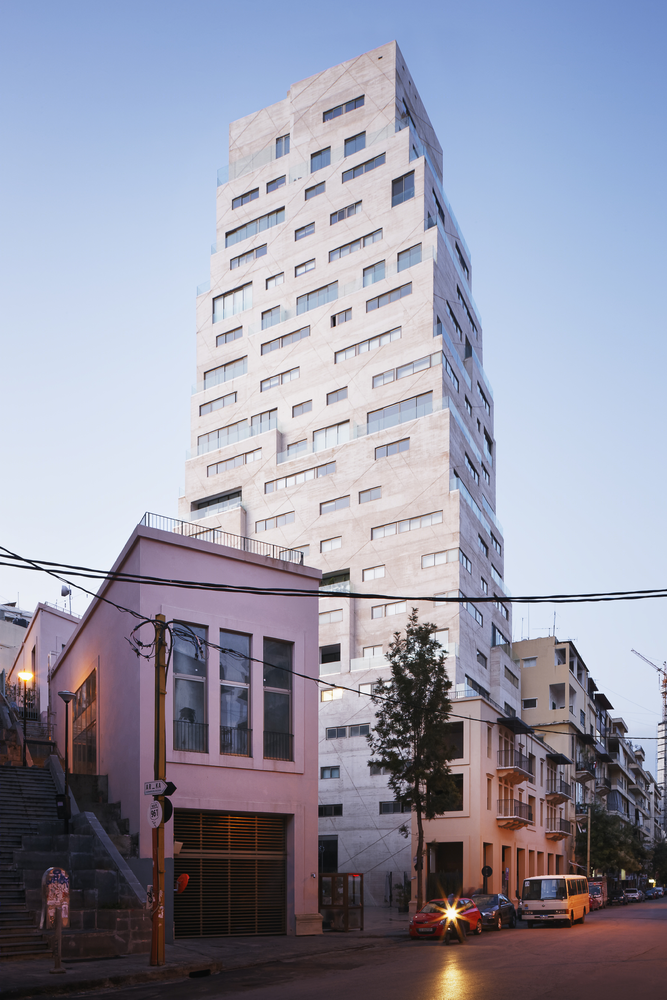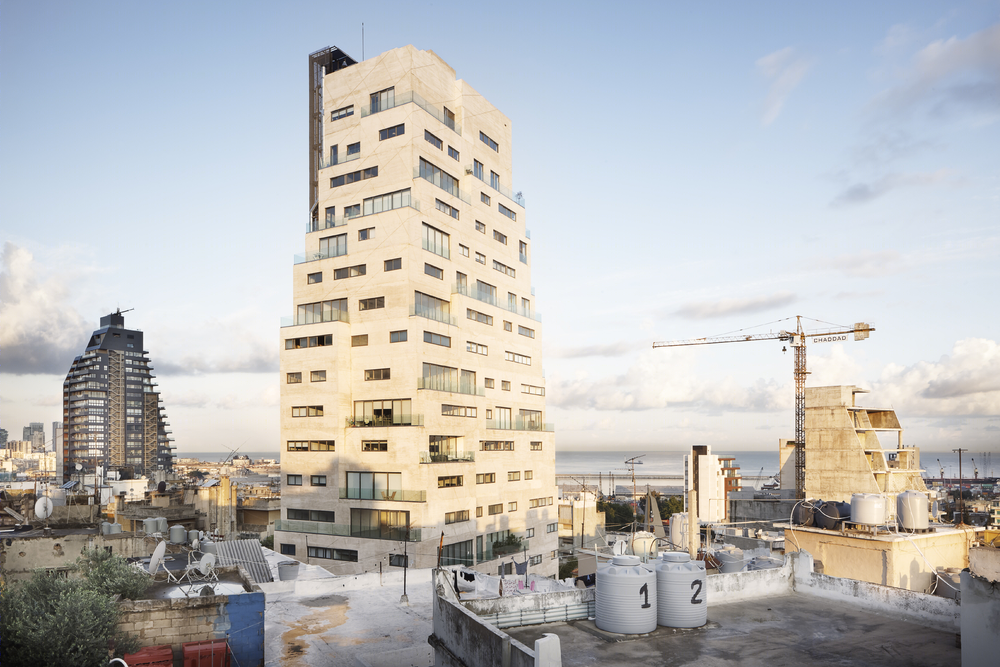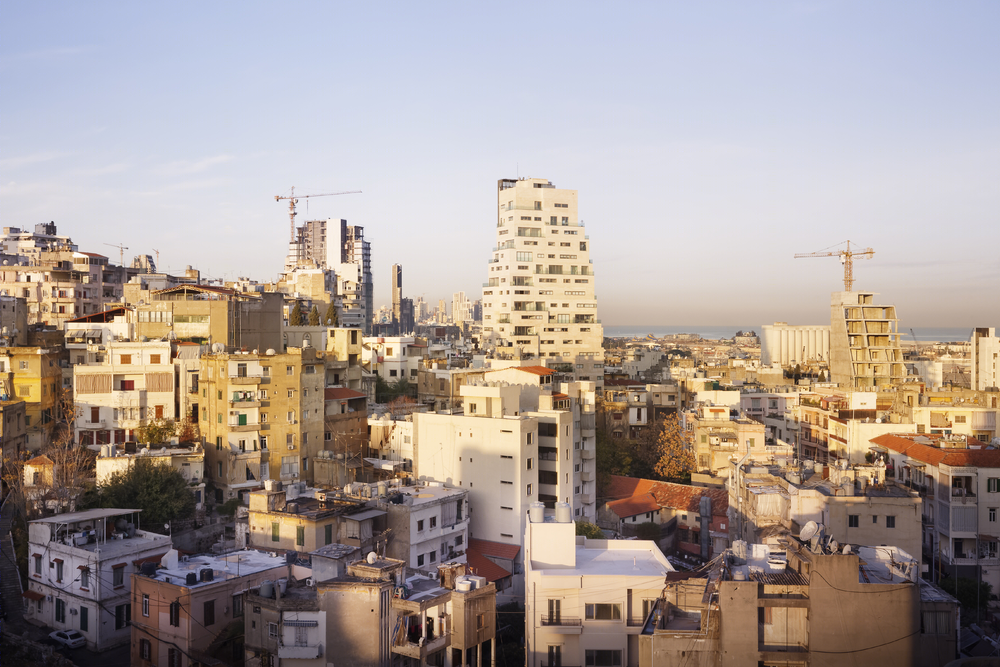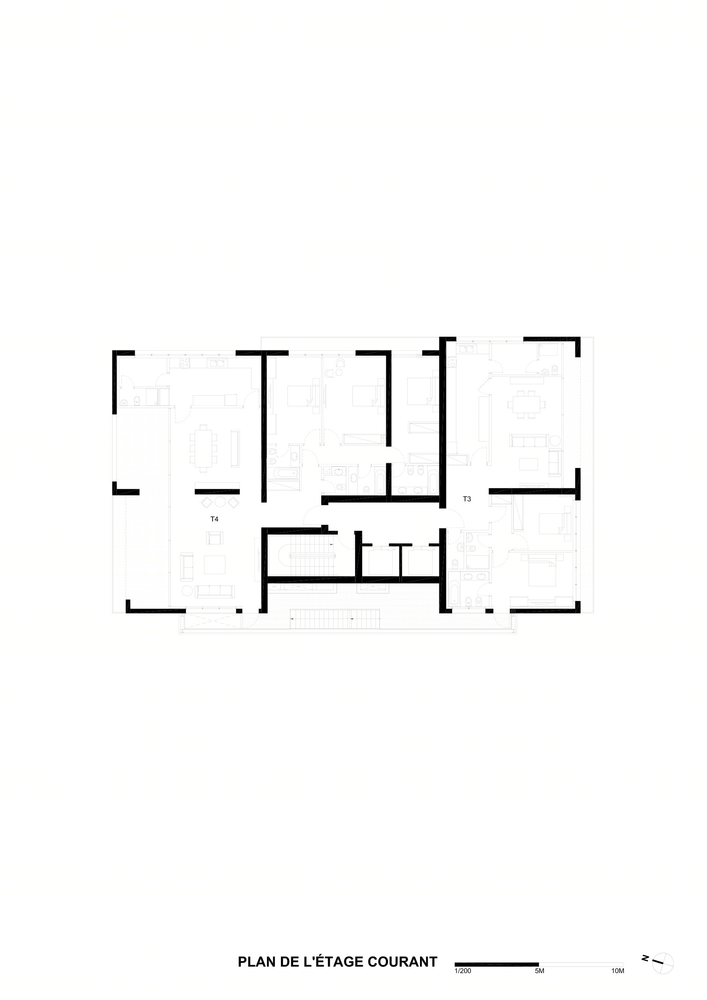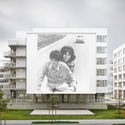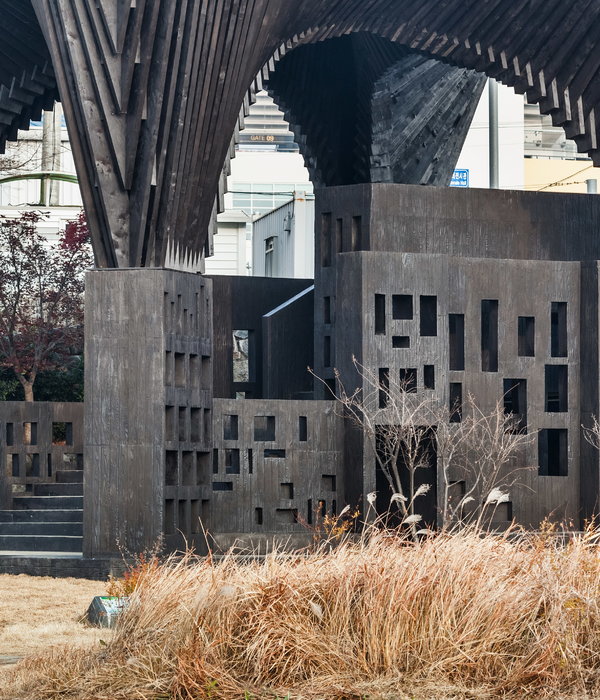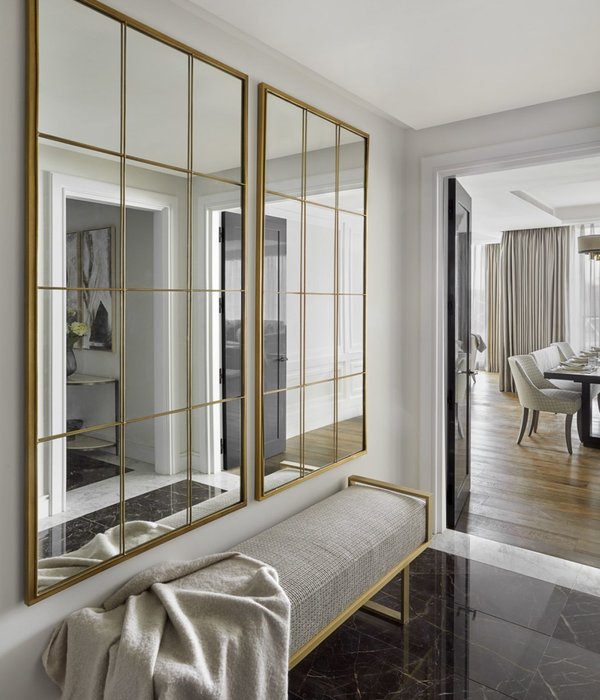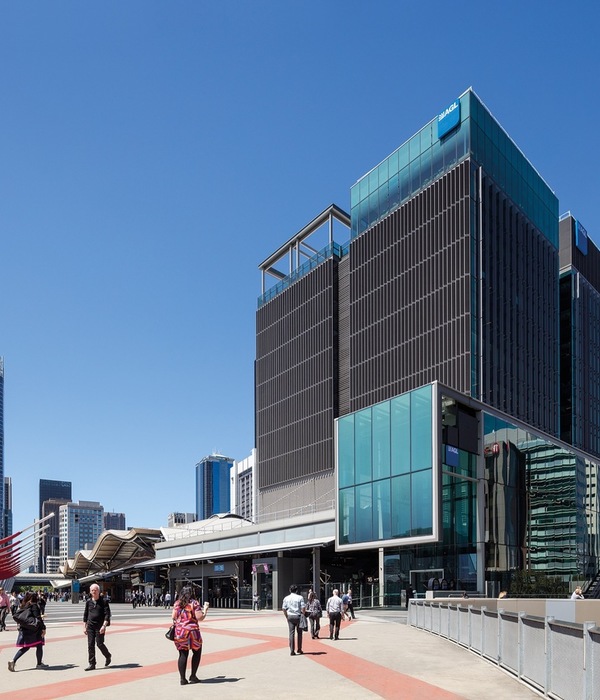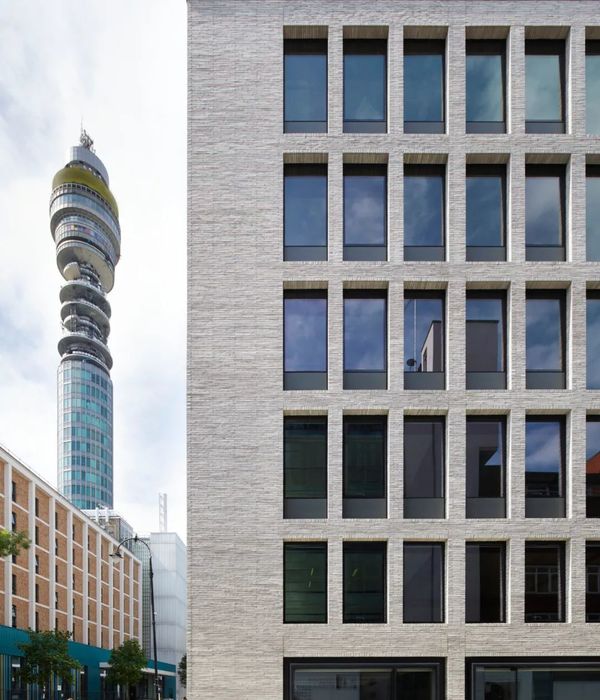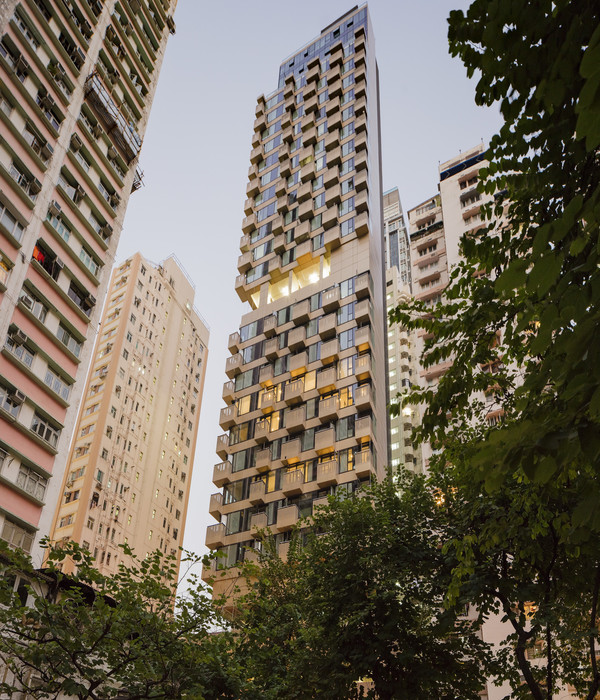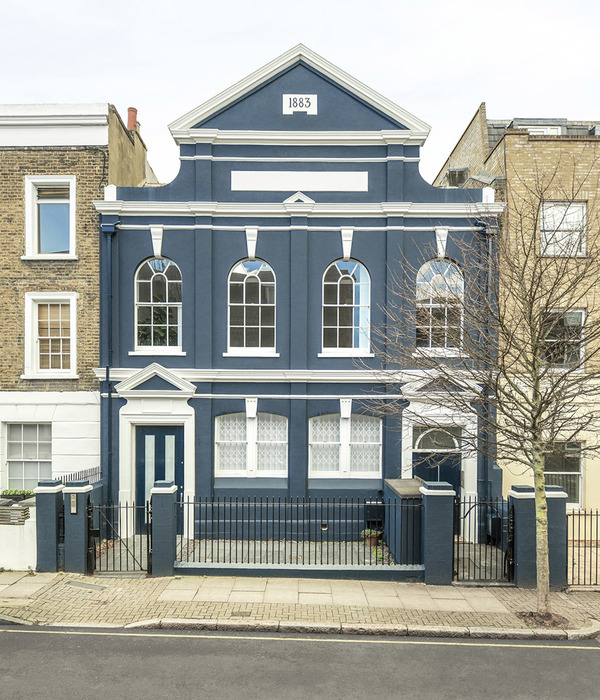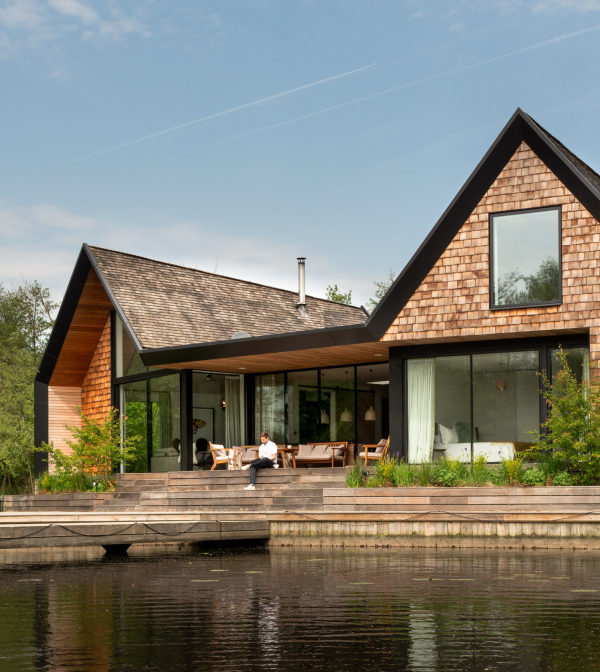融合传统与现代的阿拉伯公寓设计
Aya is a tower with an original concept, resulting from in-depth research on the Arab dwelling, a hybridization of archetypes of the traditional architecture of the Mashreq and new technologies for dwellings with a context-sensitive and contemporary design.

The rough terrain of this district, with its rocky soil, stone staircases and diverse buildings inspired a construction in movement, raising upwards to the sky what happens at a human height. Part of the older building facing the street has been preserved and a small plaza leading toward the tower has been created. Along the staircase, two volumes emerge, following the slope and the heights of the buildings facing them. Thus, the tower only slightly changes the configuration of the street, which is simply widened on the little plaza with new shops.

The apartments are designed as houses, each with its specific features, and each enjoying an open-air terrace. The tower’s structure is comprised of a succession of setbacks, which gives each apartment a fully unobstructed view of the sky. According to the position of the apartments in this tower, their terrace is oriented either facing the sea to the north, the mountains toward the east or facing toward the southern area of the city. The setbacks sculpt the volume according to the varied orientations of the apartments. By eschewing a conventional stacking of terraces, the façades are composed of gaps, which are horizontal for the orientations, and vertical for the setbacks.

The principle of setbacks led to the principle of an internal load-bearing wall to absorb seismic shocks. The exterior walls also play a thermal role. Reducing the use of air-conditioners to the maximum, double ventilated walls were chosen for the level of the bays. The structural part is made of ordinary concrete and the double skin of white concrete.
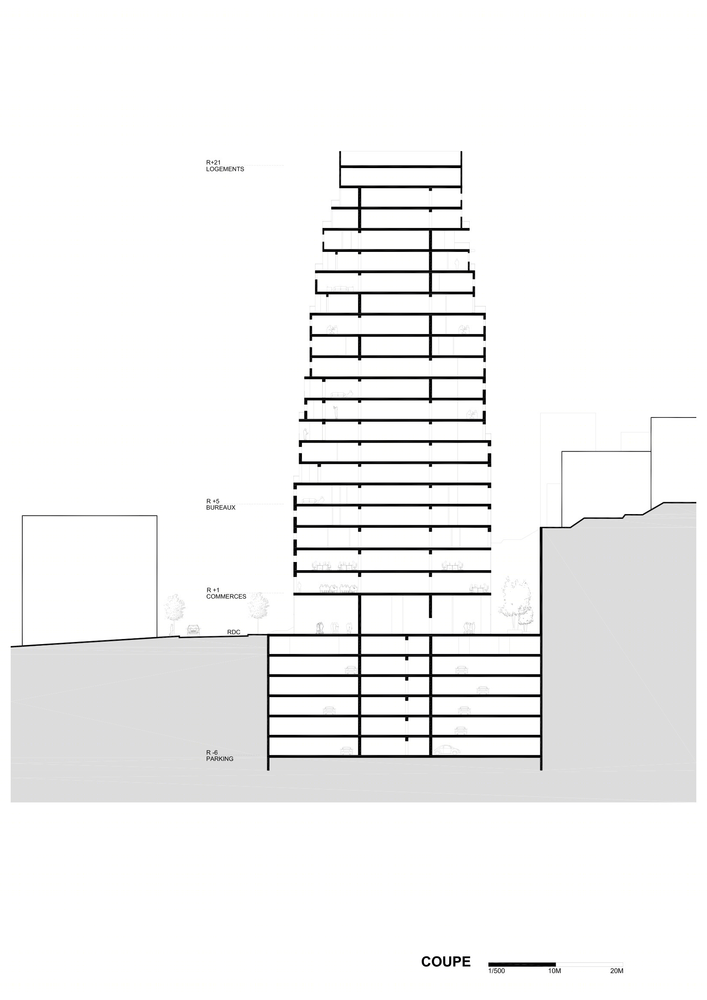
Floor plans have been inspired by the different floor plans of traditional houses of the Mashriq to realize a modern metamorphosis that places the room layouts in squares, and namely the principle of gradual entry (see early studies on the plan).

This approach, which does not pretend to strictly update the Arab plan, seeks rather shift the lines between the system of the traditional plan, which mainly organized the space for gatherings, and the modern system, which is much more concentrated on organizing space dedicated to the individual.
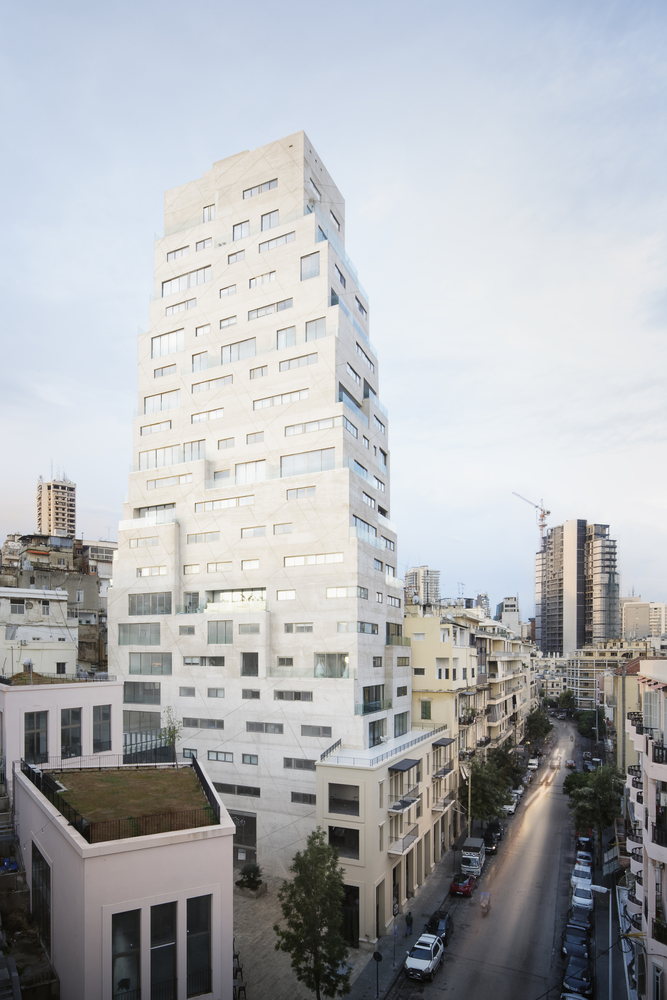
The origin of the plans. Apartments in the Aya Tower follow the model of traditional Arab houses. This type of configuration is found in houses built in Qatar, Morocco as well as Lebanon. The tower retains this plan, inspired by the recurring triptyque: patio, iwan (vaulted room), and majlis (reception rooms). Like a traditional house, the apartments in the Aya Tower integrate this system.
